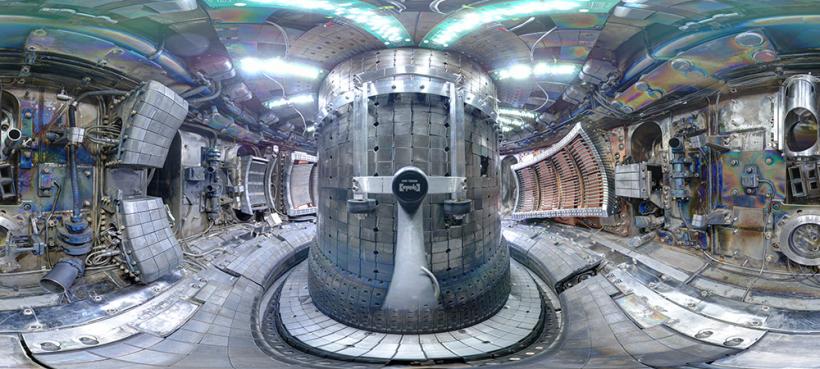I mostly write about fission power reactors because there are four hundred operational fission reactors in the world. I do talk about fusion reactors occasionally although there are no commercial nuclear fusion power reactors on Earth. Scientists have been chasing fusion power for decades but it always seemed to be forty years in the future. Recently, national governments have banded together to research fusion technology. At least half a dozen private firms are working on their own fusion reactor designs so now it appears that fusion power may be only a decade away. Recently, Nature magazine published an article about a breakthrough in fusion research at the Massachusetts Institute of Technology.
MIT conducts fusion research with its Alcator C-Mod tokamak. This device holds the record for the highest pressure and highest magnetic field strength ever recorded in a tokamak. MIT has been working with scientists in Belgium and the U.K. Tests with the MIT Alcator C-Mod ended in 2016 but the results are still being analyzed. Researchers have found that a new type of fuel that they tested released ten times as much energy as they had previously achieved with other fuels. The experimental setup and new fuel were also tested on the Joint European Torus in Oxfordshire, U.K. and the results were verified.
Previous experiments with the Alcator C-Mod had burned a fuel that consisted of hydrogen and deuterium which is a stable isotope of hydrogen that contains a neutron in the nucleus. The most recent run of experiments used a fuel that was ninety five percent deuterium with the rest being hydrogen and helium-3 which is a stable isotope of helium that only has one neutron in the nucleus rather than two which is much more common.
In the Alcator C-Mod, a plasma of charged ions is held in magnetic confinement. Radio frequencies of electromagnetic energy from antennas outside the plasma chamber are used to heat the plasma. The frequency of the EM energy is tuned to affect the hydrogen in the mix which had represented five percent of the mixture of ions. This results in extremely high energies for the hydrogen ions. The hydrogen ions collide with the deuterium ions and this produces heat and electricity.
In the new run of experiments, helium-3 constitutes one percent of the mixture of ions. The radio frequency excitation has been retuned to heat the helium-3. This resulted in achieving higher energies for the ions than had ever been achieved with the hydrogen heating. The new energies were ten times the previous energies.
The Alcator C-Mod and the JET are able to reach temperatures and pressures that would be necessary in a fusion power generator but they are smaller than a fusion reactor that could produce more energy that is put into it. Research with the Alcator C-Mod and the JET will allow the scientists to fine tune the different parameters they are working with to find the best configurations to use when they scale up to full size functional reactors.
An MIT fusion scientist said, “These higher energy ranges are in the same range as activated fusion products. To be able to create such energetic ions in a non-activated device—not doing a huge amount of fusion—is beneficial, because we can study how ions with energies comparable to fusion reaction products behave, how well they would be confined.”
MIT Alcator C-Mod fusion reactor:
